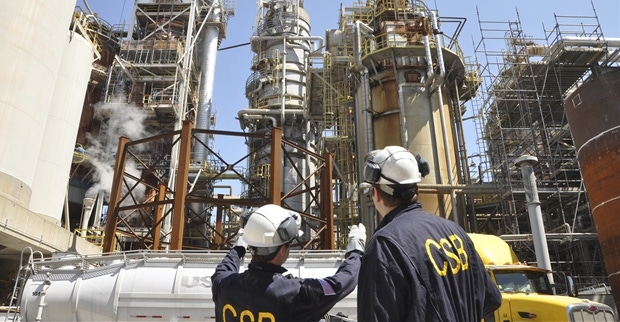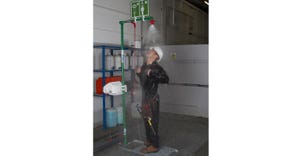CSB: Safety Lapses Caused 2015 ExxonMobil Refinery Explosion
May 8, 2017

A final report investigating the causes of an explosion at the ExxonMobil refinery in Torrance, CA on Feb. 18, 2015 by a federal regulatory agency blamed the blast on lapses in the facility’s process safety management system
The U.S. Chemical Safety Board (CSB) said in a May 3 press release that the explosion in refinery’s fluid catalytic cracking (FCC) unit stemmed from a faulty slide valve that permitted hydrocarbons to flow into the “air side” of the FCC unit. An electrostatic precipitator (ESP) was ignited, causing the explosion.
“The explosion and near miss should not have happened, and would likely not have happened, had a more robust safety process safety management system been in place. The CSB’s report concludes that the unit was operating without proper procedures,” the agency’s chairperson, Vanessa Allen Sutherland, said in a statement.
Gaps in the facility’s safety system allowed the FCC unit to operate without pre-established safe operating limits and shut down criteria, instead employing safeguards that were not verified and re-using a previous procedure deviation that did not take current process conditions into account, the CSB’s investigation found. The slide valve was determined to be degraded, contributing to the incident. Agency investigators also found that a large piece of debris nearly collided with a tank holding “tens of thousands” of pounds of modified hydrofluoric acid (MHF).
“Adoption of and adherence to a robust safety management process would have prevented these other incidents. In working with inherently dangerous products, it is critical to conduct a robust risk management analysis with the intent of continually safety improvement,” Sutherland said.
Click here for information about the PBS Toronto event, May 16-18, 2017
The CSB report said direct violations of ExxonMobil’s corporate safety standards occurred at the site leading up to the incident, including the firm’s lock out/tag out procedures. The agency said the site, which was sold to PBF Holdings Company LLC in July 2016, has continued to experience incidents since the 2015 explosion.
“There are valuable lessons to be learned and applied at this refinery and all refineries in the U.S. Keeping our refineries operating safely is critical to the well-being of employees and surrounding communities, as well as to the economy,” Sutherland said.
As a result of the explosion, the refinery was run at limited capacity for more than a year and gas prices rose in California, costing drivers there an estimated $2.4 billion, according to the CSB.
No fines are issued by the CSB, but the agency provides recommendations to facility owners and operators on safety matters.
For more articles, news, and equipment reviews, visit our Equipment Zones
You May Also Like


